
Enforcing an educational discipline often comes at the cost of giving up the pursuit of authenticity epitomized by the expression joie de vivre. Whether moving on from these pursuits or forgetting them altogether is a requisite of growing up will always be a topic of debate between parents, friends, progeny, and therapists. Along the way, the disciplinary methods enforced by schools will influence our ethics and define the moral boundaries of our society. With La Niña No Obedece (2020), the Colombian artist Ana María Lagos has created an ambitious yet playful photobook that contests what she has termed the “choreography of obedience” imposed by the educational system. On the one hand, the title refers to a typical teacher’s complaint on a report card. On the other, it serves as a metaphor for those paternalistic ideologies compelling citizens into order.
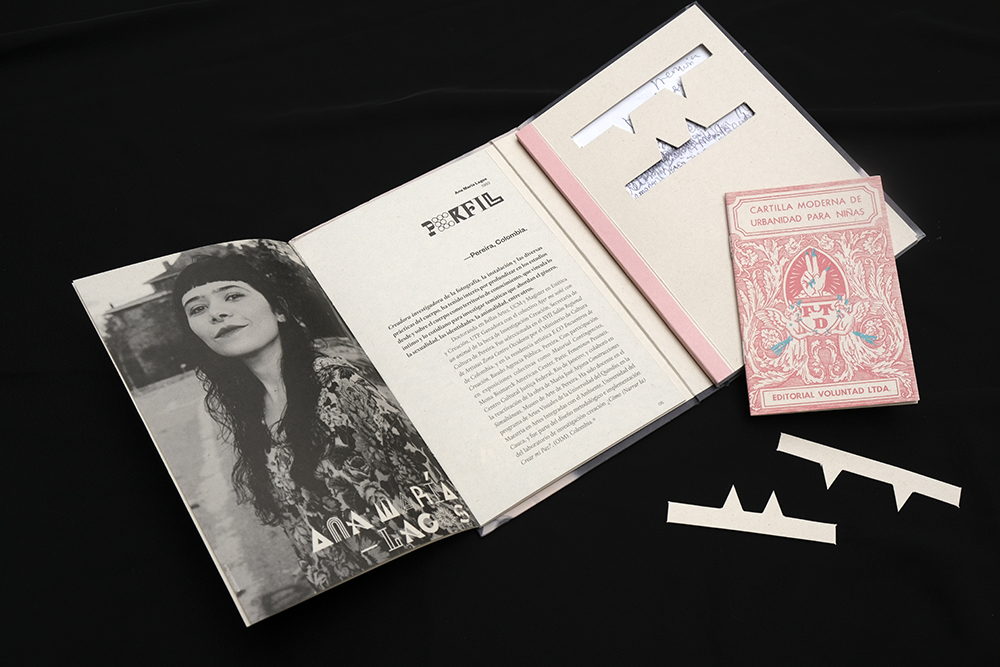
La Niña No Obedece comprises three distinct parts lodged unbound in a hard-shell cover: the main volume (shaped like a school notebook), a downsized reproduction of the Cartilla moderna de urbanidad para niñas from 1966 – a manual of manners and Christian values for girls – intervened with drawings and notes, and a booklet containing an artist statement, an interview with Lagos, and a manifesto from the publisher (Santiago Escobar-Jaramillo, founder of Raya) on the concept of expanded photography in Latin America. The book’s size is that of a mass paperback novel, which emphasizes its narrative qualities and encourages an intimate viewing.
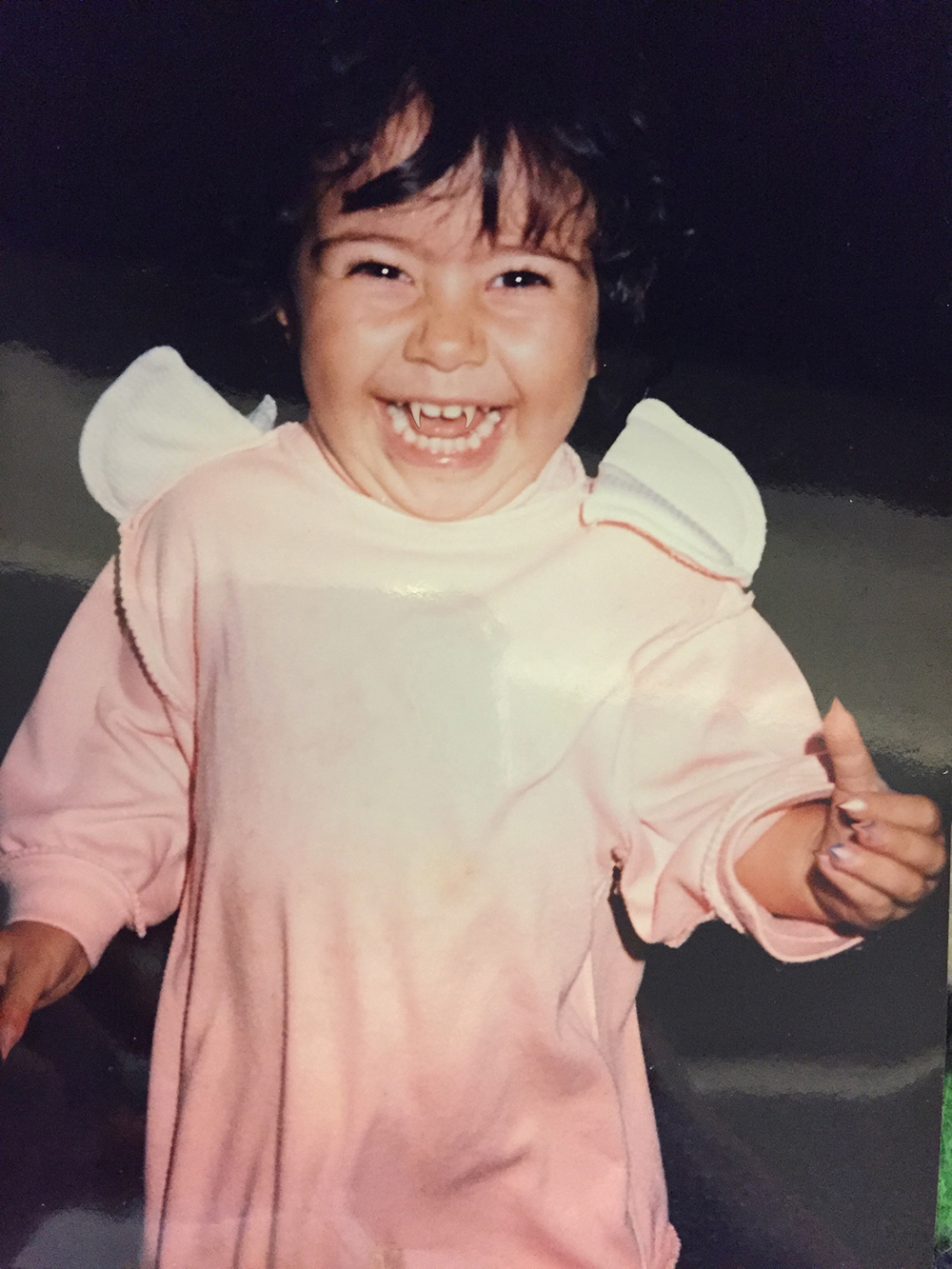
The main volume, composed chiefly of photographs from the artist’s familial archive, is printed on a rough stock that gives it the quality of a perused pamphlet. Lagos has intervened the archival pictures, which see her grow from a baby to a small child, by drawing fangs on her mouth to make her look like a wolfwoman. It’s fascinating to imagine what the life of such a distinctive creature would look like, a subject explored realistically in horror movies like Let the Right One In (2008), although here it’s done with dark humor that underscores the absurd impositions of education. Lagos’ approach is evident from the cover, with its detachable set of paper fangs that you can put in your mouth to partake in the resistance against the patriarchal institutions that attempt to tame our bodies.
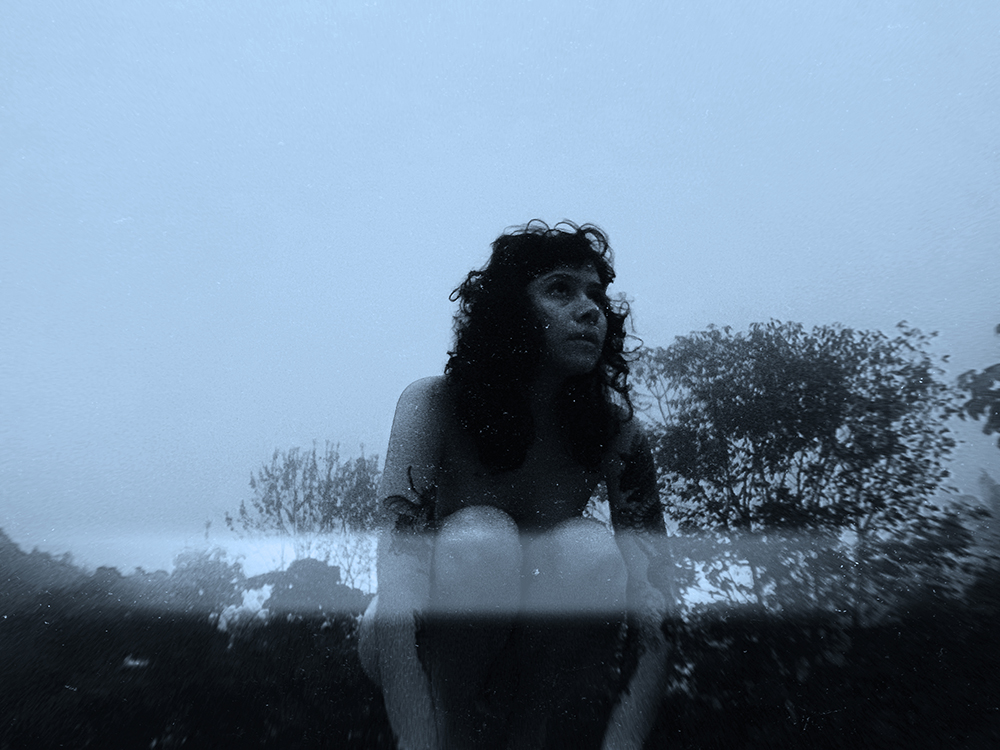
A handful of present-day images show the artist nude in a forest, the conclusion of her transformation into a wild wolfwoman despite a lifetime of correction. These monochromatic images – tinted in various shades – recall the radical performance work of artists like Ana Mendieta and Lygia Pape, who used their bodies to critique the biased values of societal conventions. Nudity is also present in a few archival pictures, showing Lagos being bathed by her father or posing next to an older girl after drawing on themselves facial and body hair with a marker. Interspersed throughout the sequence are drawings and notes that appear to be culled from school notebooks, until the writings’ sophistication reveals that they are piercing messages made to look like children’s scribbles. For example, a handwritten note lists several adjectives that describe a desirable body but tend to fall outside institutional views, such as being fragile, noisy, wide, tearful, and aggressive. That some of these concepts are contradictory is precisely the point if the preferred result is bodies that defy categorization.
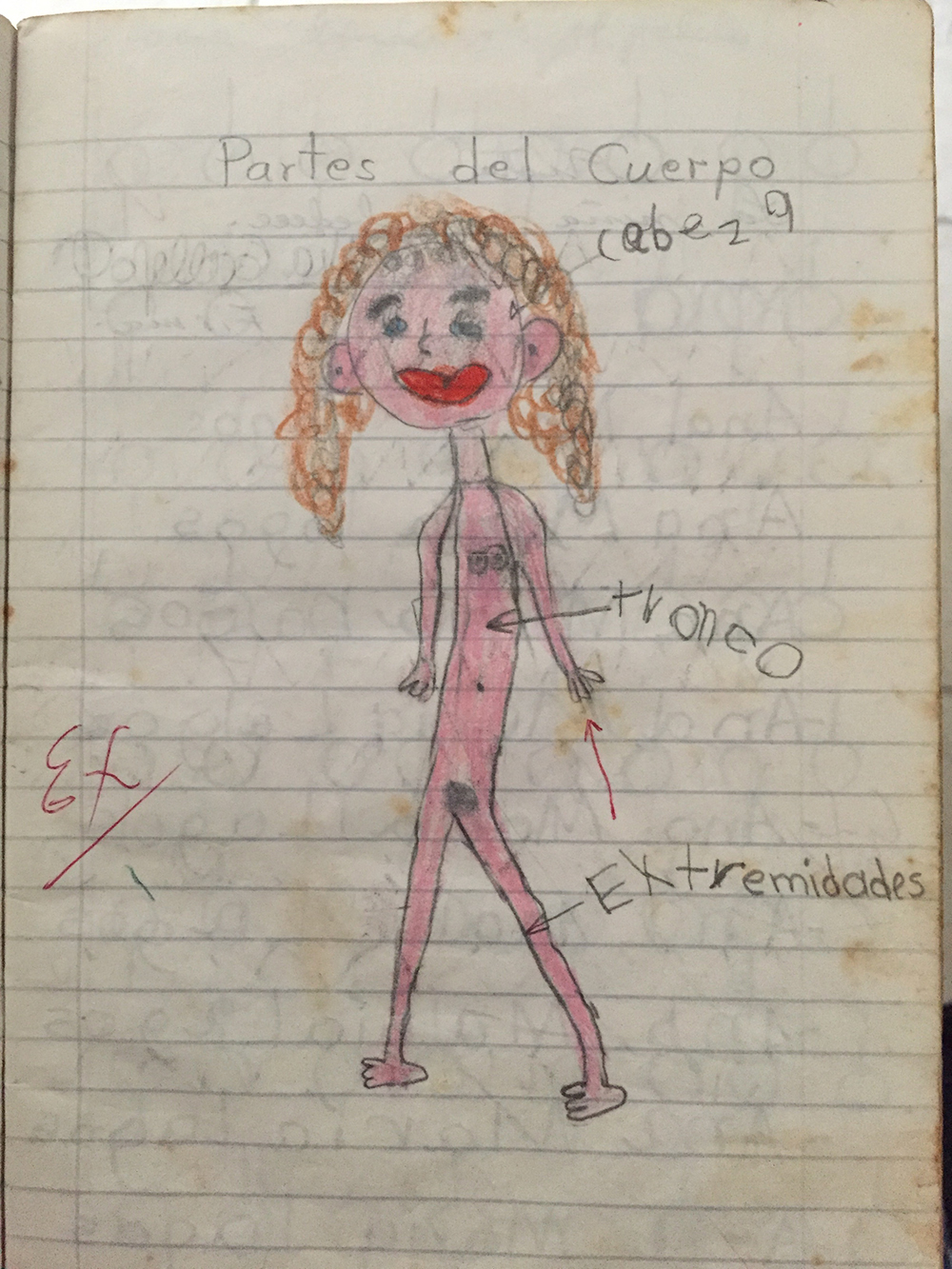
While jargony, the interview on the booklet helps us understand Lago’s interdisciplinary creative process, mainly how performance played a central role in her conception of the project. The publisher’s manifesto towards an expanded photography–a term borrowed from the influential art historian Rosalind Krauss–describes Jaramillo’s inclination to find alternative ways of storytelling that broaden the view of Latin America through “hybridity, transdisciplinarity, fragmentation, and resignification.” Lagos’ book is part of the collection AñZ (a collaboration between Raya and Matiz Taller Editorial), an incubator for unconventional publications that contest the restrictions that traditional media have enacted on documentary photography. Including a manifesto conveys the publisher’s assumed pedagogical responsibility within a Latin American context.
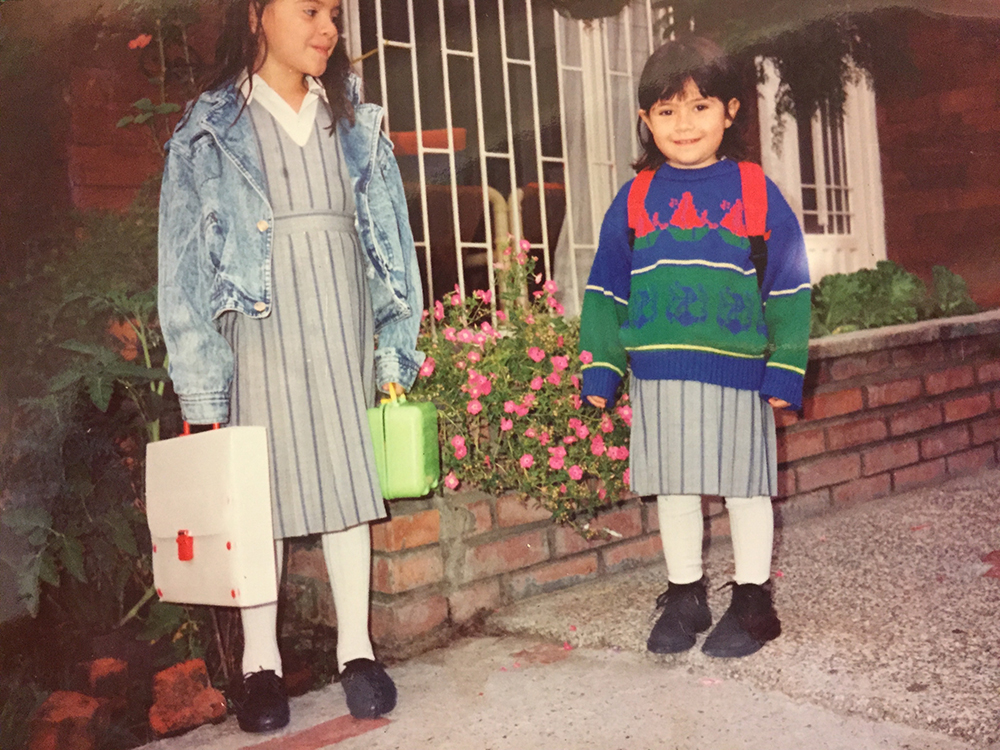
La Niña No Obedece is a provocative meditation on women’s struggle for bodily autonomy from arcane Christian conventions of good manners and taste, even if such a description makes it sound too severe and overlooks its amusing qualities. The paper fangs, in particular, promote interactivity similar to children’s books, setting La Niña No Obedece apart from stiff theoretical discourses. Nevertheless, Lagos’ lively repurposing of her personal pictures, in combination with drawings, interventions, and performance, offers a superb examination of ordinary histories, yanking them out of their perceived banality and making them work as conceptual cogs in a complex visual experiment. Moreover, the density of themes explored in such a brief volume encourages our questioning of the repercussions of moral education on the body as well as the mind.
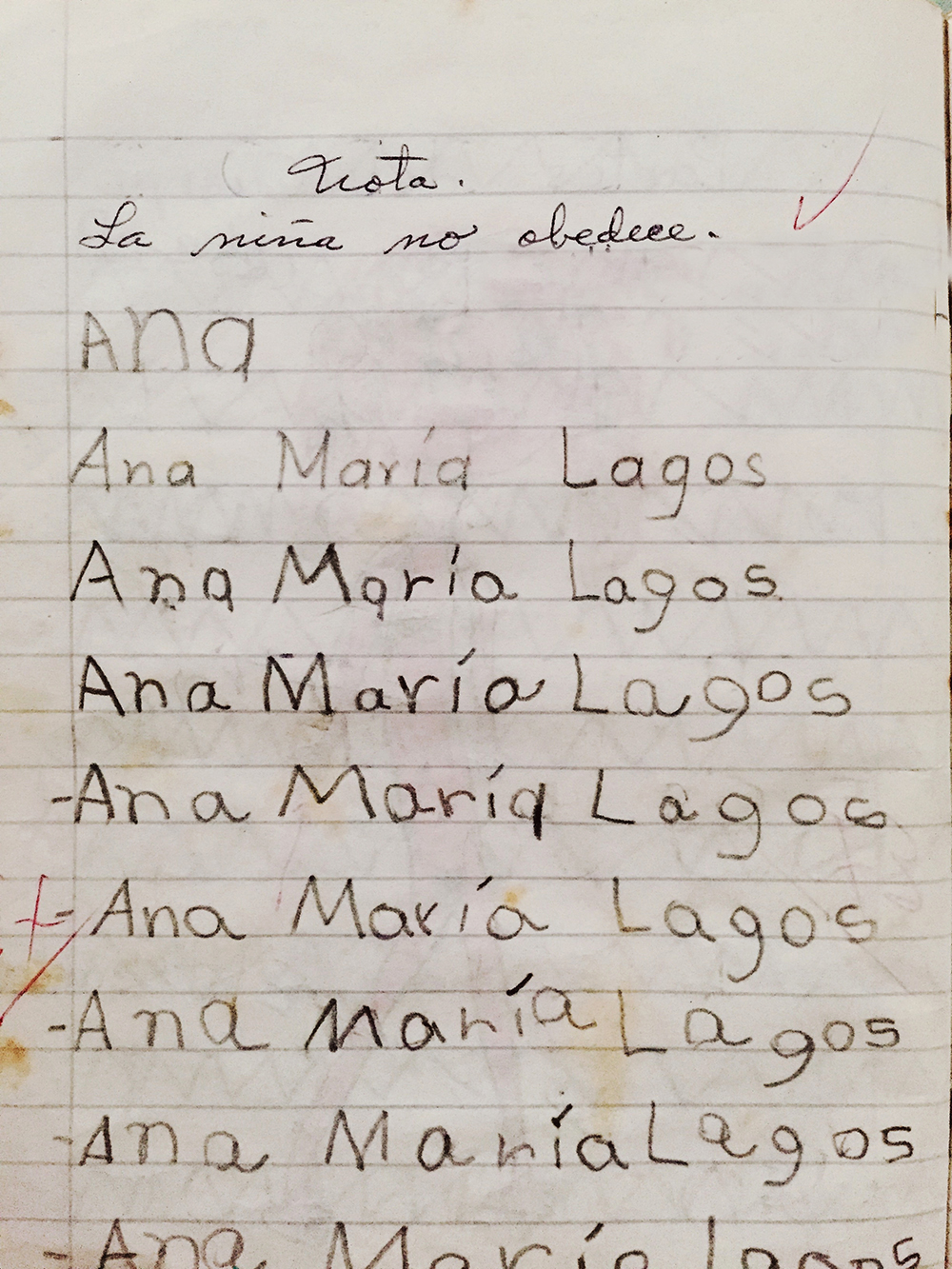
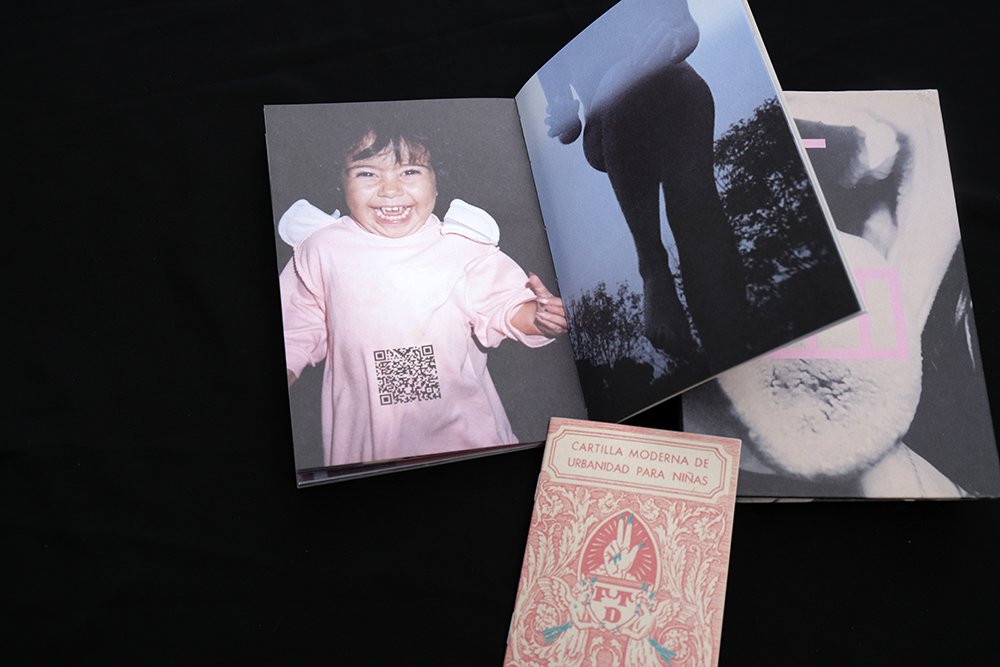
This is part of a series of reviews on Latin American photographers by Arturo Soto. Check out his other articles on Dispatches: The VII Insider Blog:
Feeling Out the Past: Graciela Iturbide’s “Heliotropo 37”
Pablo Hare: Sites of Exploitation in Peru
The Possibilities of the Actual: Adriana Lestido’s “Metropolis”
